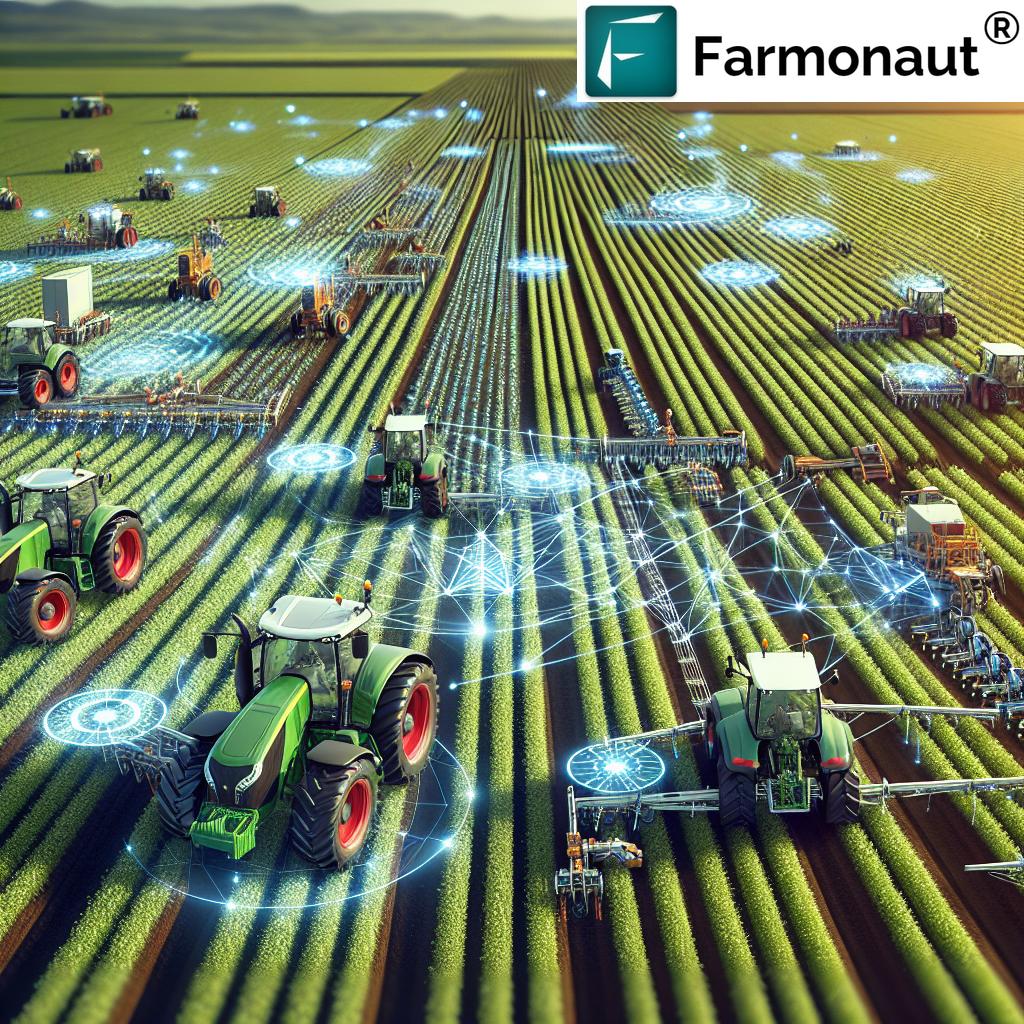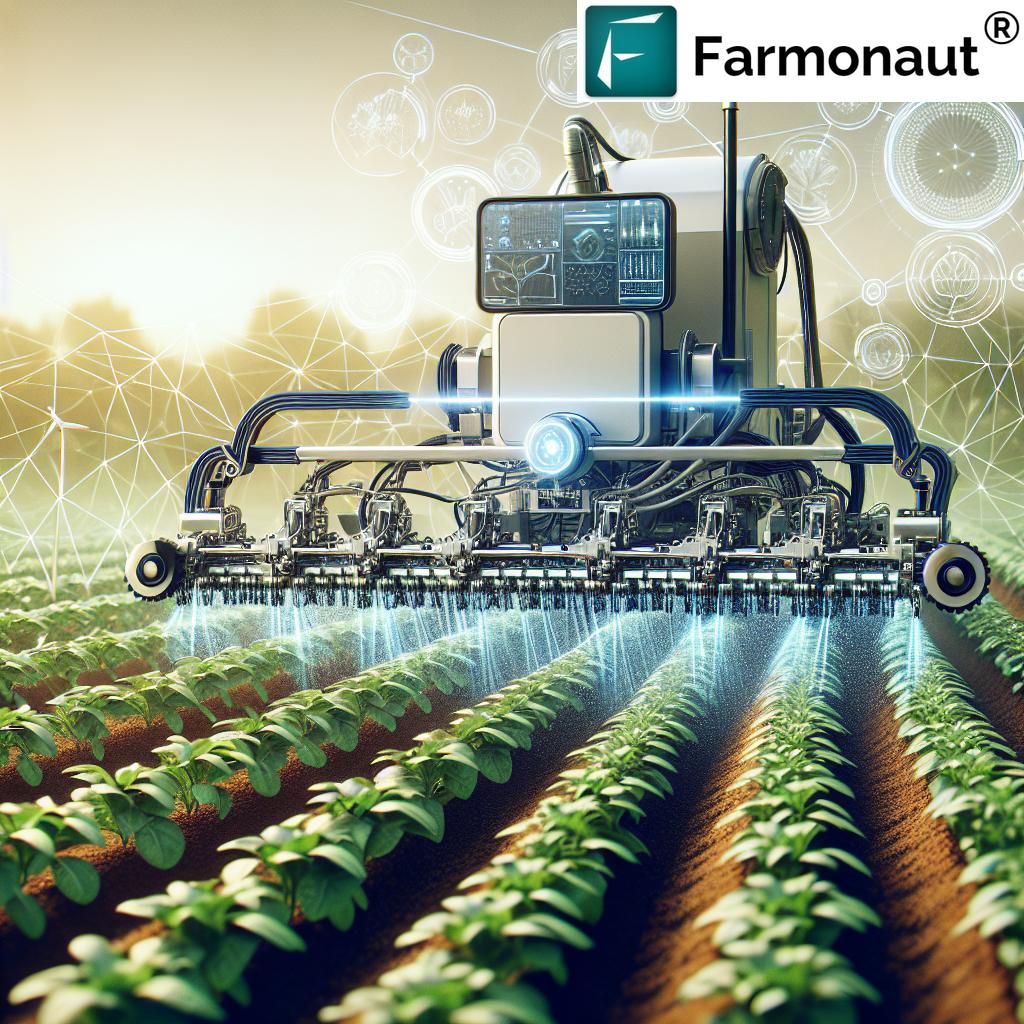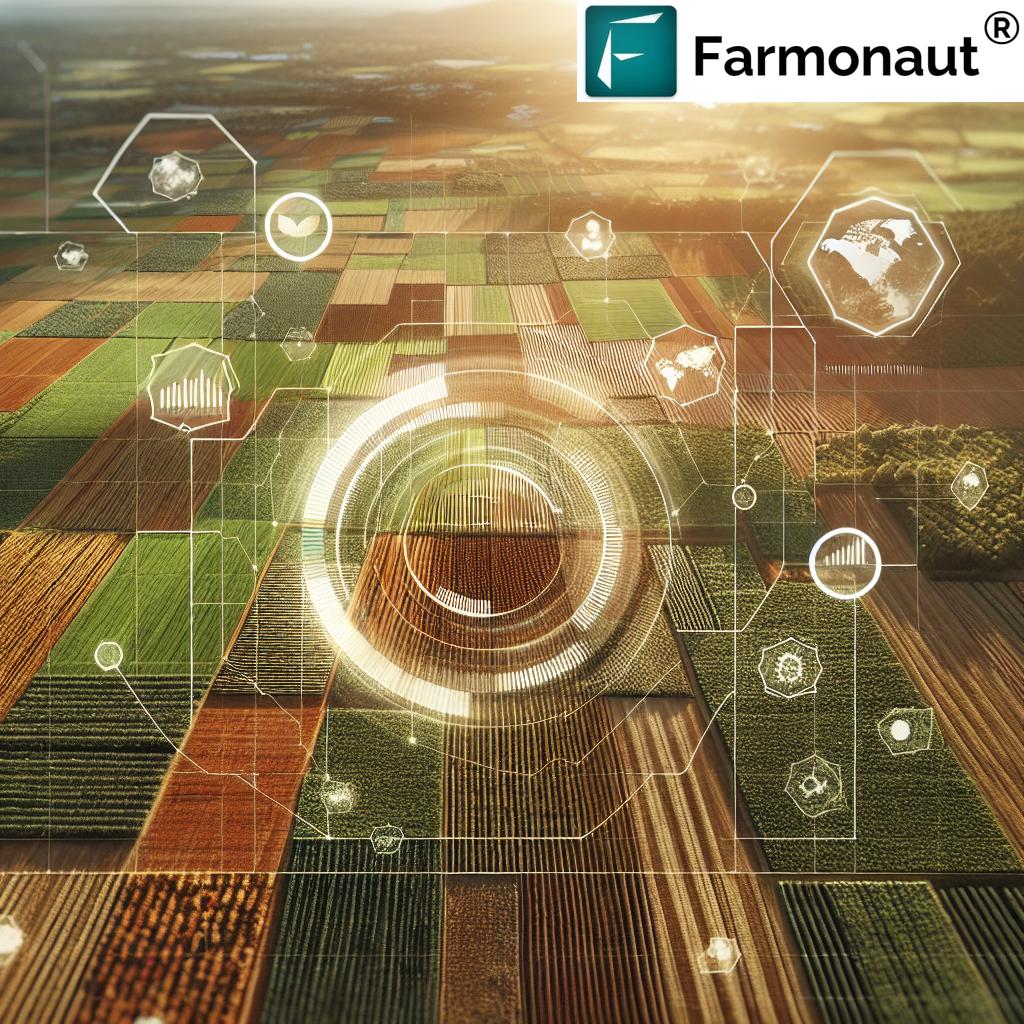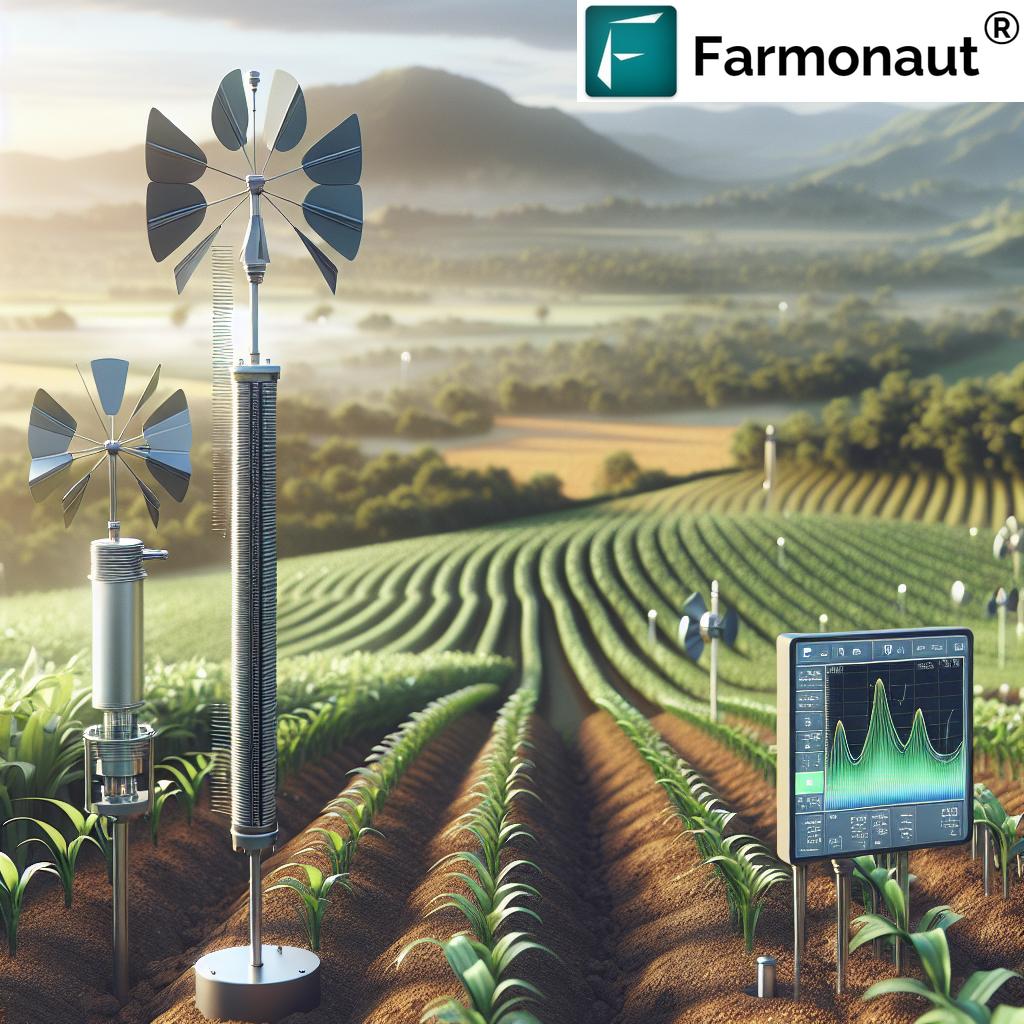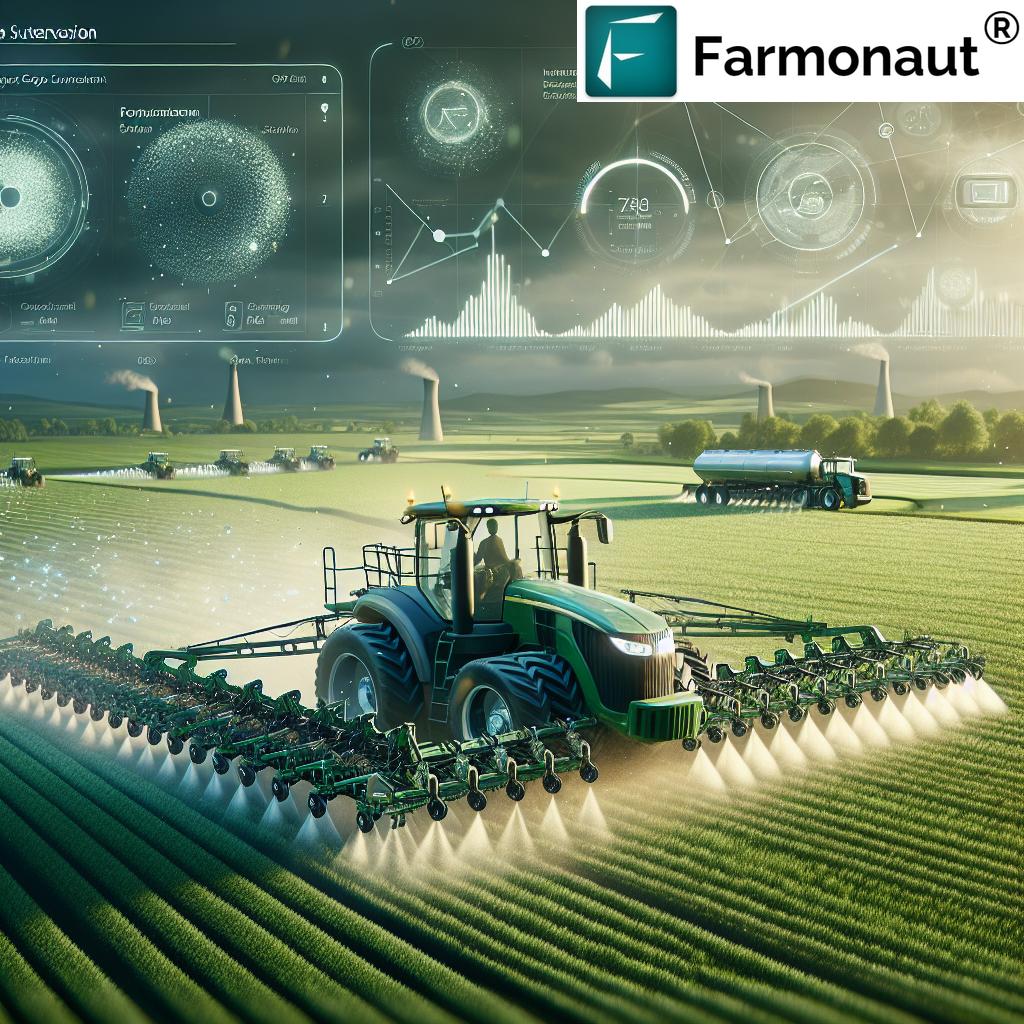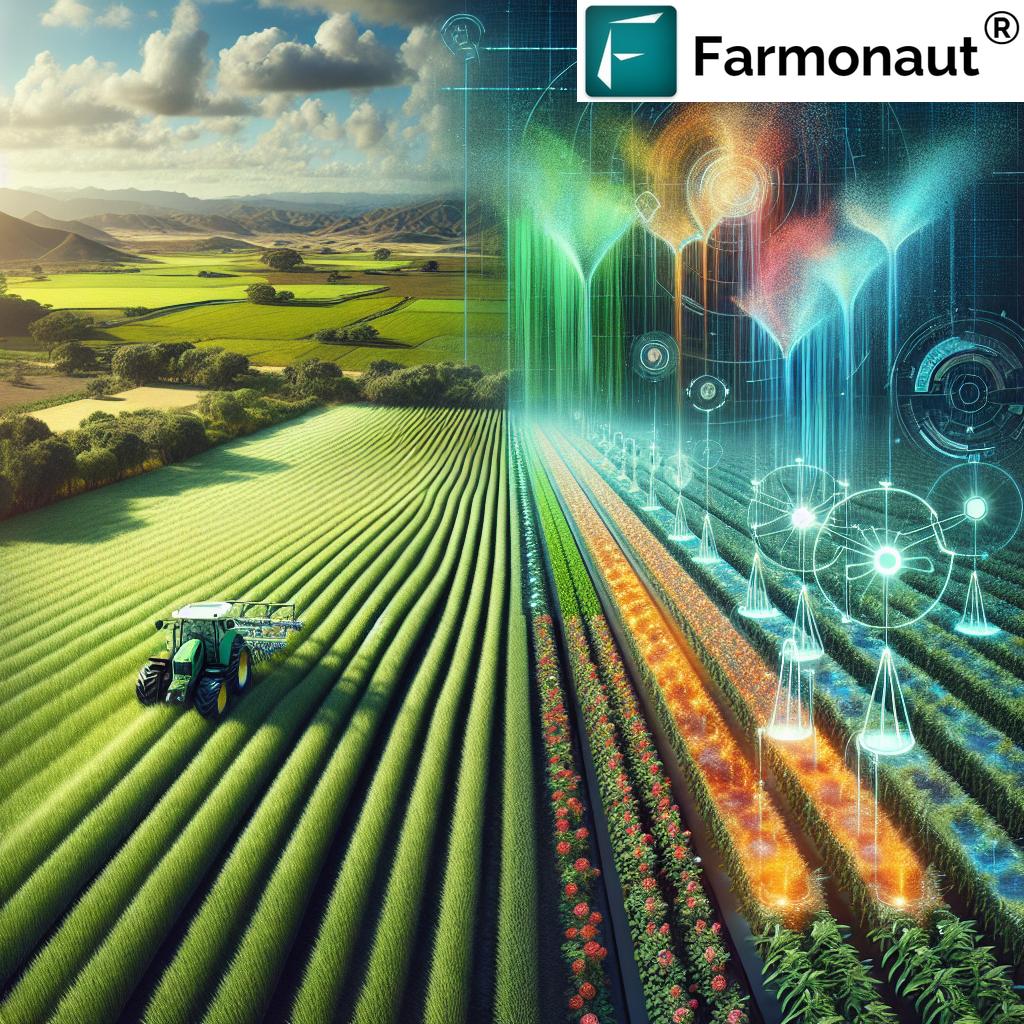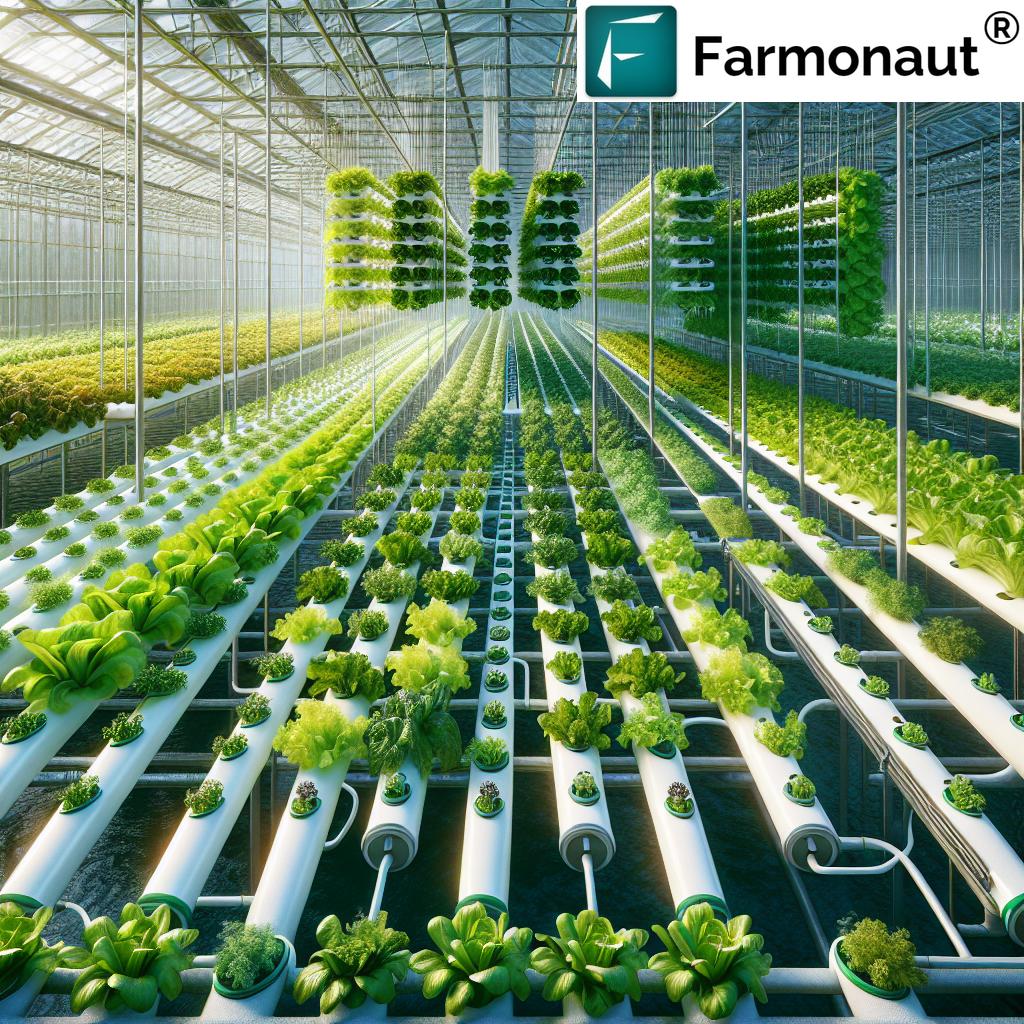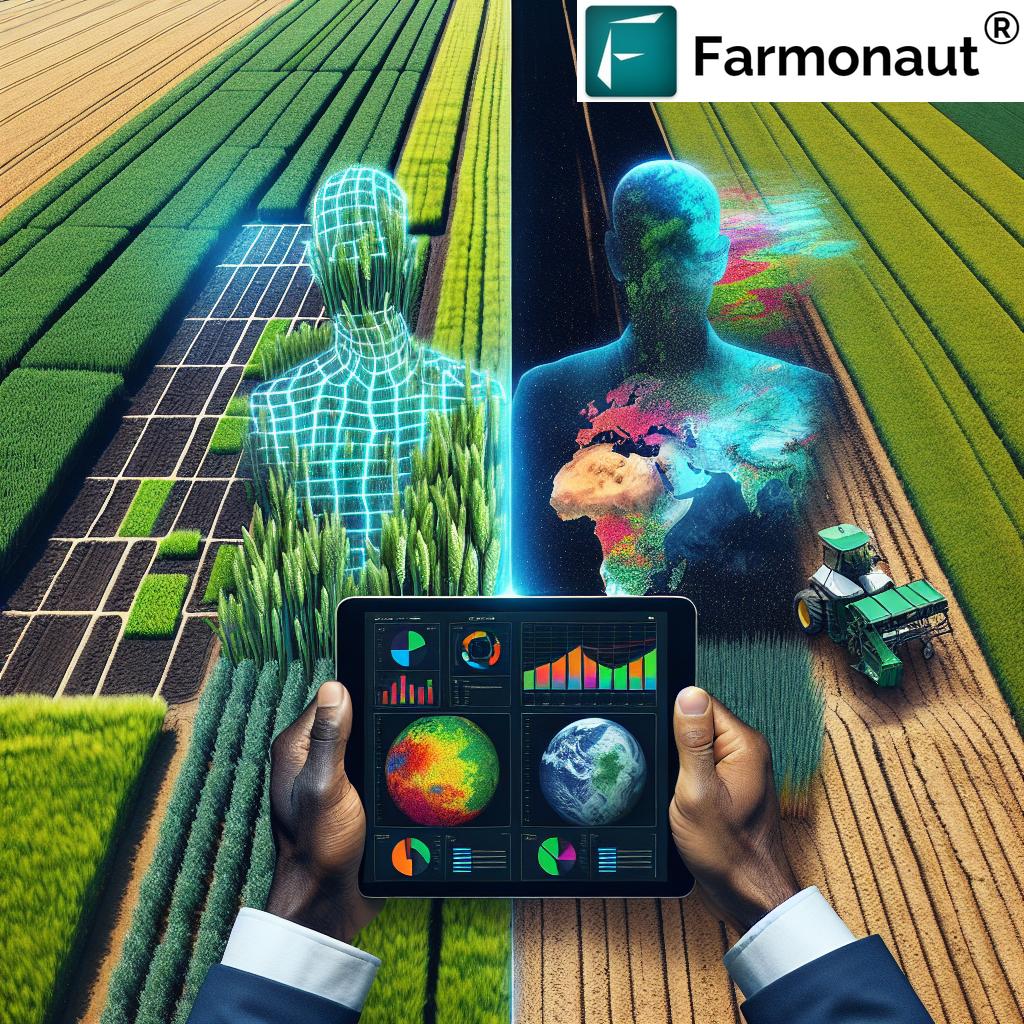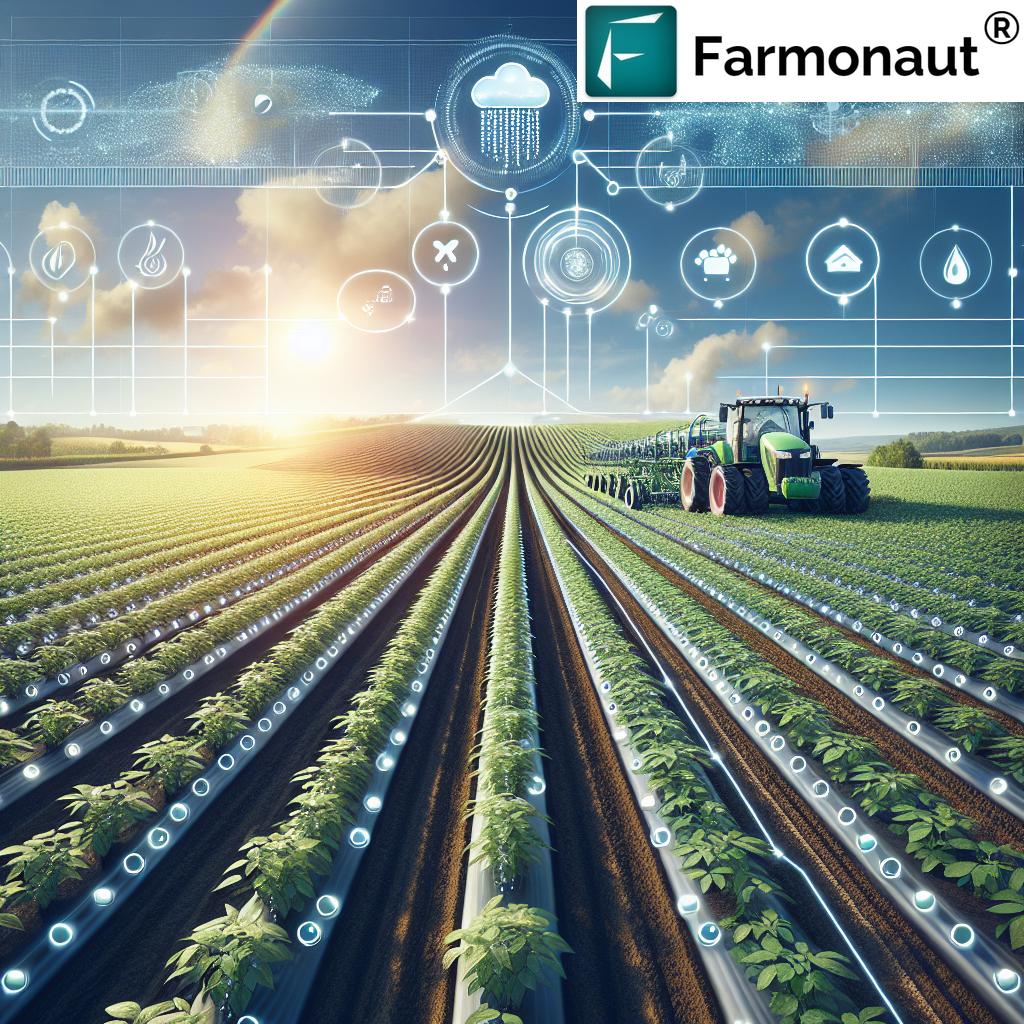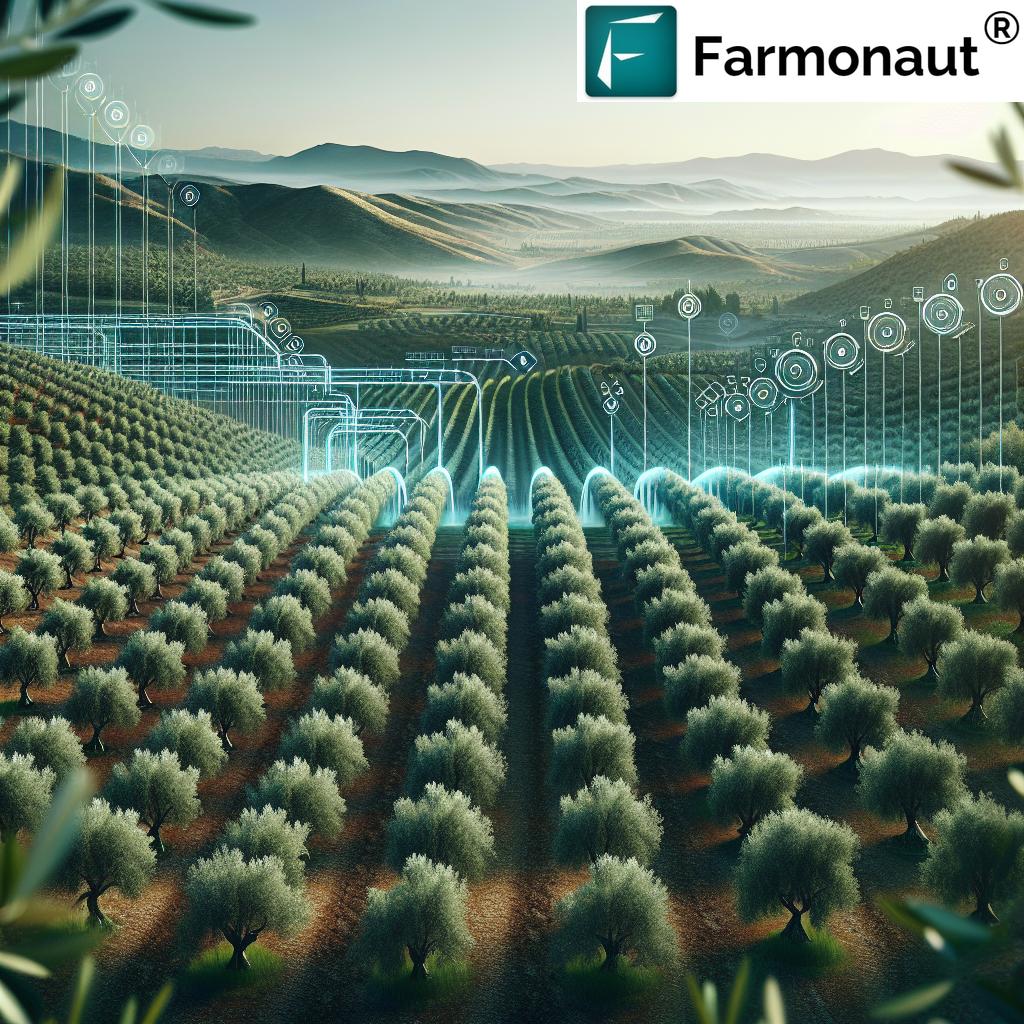Autonomous Farm Equipment: 7 Game-Changers Revealed!
“Over 50% of new tractors sold in 2023 featured autonomous or semi-autonomous technology.”
Introduction: The Era of Autonomous Farm Equipment
As we stand on the brink of a technological revolution in agriculture, autonomous farm equipment is transforming the way we approach crop cultivation, resource management, and sustainable farming practices. The integration of artificial intelligence (AI), machine learning, and robotics in farming is creating a seismic shift — redefining efficiency, reducing labor shortages, and prioritizing environmental sustainability across the global agricultural sector.
Leading agricultural machinery manufacturers are unveiling advanced farming technologies that empower us to tackle complex farming challenges. From precision planting to AI-driven autonomous tractors and computer vision-powered weeding machines, the rapid pace of innovation is truly fascinating. In this comprehensive guide, we explore seven game-changing autonomous machines, their impacts, and how digital solutions like Farmonaut are making precision agriculture accessible to farmers worldwide.
Focus Keyword: Autonomous Farm Equipment
Advancements in Autonomous Farm Equipment: Powering Agriculture’s Next Leap
We are witnessing an unprecedented era where machines are not just assisting, but autonomously performing crucial tasks in the field. This transformation is being led by industry pioneers adopting solutions that combine AI in agriculture, advanced sensors, and precision agriculture systems.
During the CES trade show in Las Vegas, John Deere unveiled a fleet of autonomous tractors and industrial equipment. Equipped with an array of cameras, cutting-edge computer vision algorithms, and cloud connectivity, their tractors exemplify the ongoing revolution (read more). Similarly, FarmWise Labs has developed the Titan FT-35, one of the world’s first autonomous weeding solutions using mechanical implements guided by AI and advanced imaging (discover details). These are just the opening chapters in our industry’s transition towards fully autonomous operations.
- Automated tasks such as planting, watering, and harvesting are becoming more precise and resource-efficient than ever before.
- AI-driven decision-making is reducing guesswork, optimizing input usage, and cutting unwanted waste.
- With robotics in farming, the heavy lifting — both literally and metaphorically — is increasingly being carried out by machines.
Looking to integrate advanced satellite, weather, and AI data into your own agri-business systems? Explore Farmonaut’s API for seamless access to cutting-edge crop, soil, and resource intelligence. Developers, read our detailed API documentation to accelerate your agri-tech projects.
Autonomous Farm Equipment: 7 Game-Changers Revealed!
Below we reveal the seven autonomous farm equipment innovations reshaping the agricultural machinery advancements landscape. These solutions represent the confluence of AI, robotics, satellite data, precision tools, and smart integrations that are pushing the boundaries of modern agriculture.
Comparative Feature & Impact Table: 7 Autonomous Innovations
| Equipment Name | Core Technology | Est. Efficiency Gain | Labor Savings | Contribution to Sustainability | Example Use-Cases |
|---|---|---|---|---|---|
| John Deere Autonomous Tractor | AI-driven navigation, computer vision, fleet connectivity | 50-60% over traditional | Up to 80% reduction | Precise input application, reduced emissions/waste | Autonomous tilling, planting, and spraying |
| FarmWise Titan FT-35 | Computer vision, AI, robotics for mechanical weeding | 35-50% | 50-70% reduction | Minimized chemical usage, reduced soil disturbance | Non-chemical weed removal |
| Autonomous Harvesters | Robotics, LiDAR, machine learning | 40-60% | Up to 70% | Reduced crop loss, optimized fuel usage | Continuous harvesting of grains, fruits |
| Drone-based Aerial Sprayers | GPS, drone navigation, AI mapping | 30-45% | Up to 85% | Reduces chemical runoff and over-application | Targeted pesticide/fertilizer applications |
| Autonomous Seeding Robots | AI, GPS, robotics, soil sensors | 25-40% | 50-60% | Optimal seed placement, reduced seed wastage | Precision row crop planting |
| Autonomous Irrigation Systems | IoT sensors, AI, smart controls | 30-55% | 60-75% | Water savings, improved soil health | Automated, weather-responsive irrigation |
| Satellite-driven Farm Management | Satellite imagery, AI analytics, blockchain | 45-65% | 60-80% | Reduced input waste, enhanced carbon footprint tracking | Real-time crop monitoring, resource optimization |
Key Benefits of Autonomous Farm Equipment
The adoption of autonomous farm equipment in agriculture is driven by a clear promise: to make farming more efficient, productive, and sustainable—while simplifying the lives of farmers. Here’s how:
- Increased Efficiency & Productivity
Machines can operate continuously, executing planting, watering, and harvesting tasks at optimal speeds and with laser-like precision. Automation leads to optimized resource use and consistently higher crop yields.
(market analysis) - Addressing Labor Shortages
The sector frequently faces labor shortages—especially in peak seasons. Autonomous equipment can alleviate this issue by handling repetitive, labor-intensive jobs, thereby reducing human dependency.
(find out more) - Sustainability & Environmental Gains
AI-powered machinery applies fertilizers or pesticides exactly where needed, minimizing chemical runoff and promoting sustainable farming practices. Optimizing resource usage leads to reduced waste and a smaller environmental footprint.
(impact stats) - Precision Agriculture Systems
Today’s precise application methods stem from the integration of advanced sensors, real-time weather data, and satellite imagery. The result is precision agriculture systems for resource optimization and maximum return on investment.
“Autonomous harvesters can reduce manual labor needs by up to 70% on large-scale farms.”
Challenges and Solutions in Implementing Autonomous Farm Equipment
Despite the promising advantages, the path to widespread adoption isn’t free of obstacles. Here’s how the agri-technology community is addressing these challenges:
- High Initial Costs: Advanced machines and digital tools call for a significant upfront investment. Many small-scale farmers find this barrier daunting (more info).
- Technological Complexity: Operating and maintaining new autonomous systems require new skillsets, creating a training gap that needs to be filled by education and support initiatives (dive deeper).
- Integration with Existing Systems: Mixing new technology with legacy farm equipment and traditional practices can be technically complex and costly.
- Data Management & Cybersecurity: Autonomous farm equipment generates vast amounts of sensitive agricultural data. Ensuring privacy, proper management, and strong security protocols are mission-critical (learn about data concerns).
- Regulatory & Safety Concerns: Safety standards, regulatory compliance, and liability must be addressed to protect farmers and surrounding communities as autonomous systems become more mainstream
(regulation insights).
Farmonaut: Empowering Precision Agriculture with Data & AI-Driven Insights
As autonomous farm equipment takes root, platforms that complement machine autonomy with rich data and analytics are essential for achieving the next level of agricultural productivity. Farmonaut has positioned itself at the forefront of supporting sustainable farming practices by making precision agriculture affordable and accessible for all, from individual farmers to large agribusinesses.
- Satellite-Based Crop Health Monitoring
By leveraging farmonaut’s crop, plantation & forest advisory service, farmers can access multispectral satellite imagery and insights such as NDVI, soil moisture, and crop stress indicators — all critical for making informed real-time intervention decisions. - Jeevn AI Advisory System
Farmonaut delivers AI-powered personalized farm advisory directly to users, enabling smarter, real-time responses and optimizing operations in step with weather and field conditions. - Blockchain-Based Product Traceability
With the product traceability solution, businesses can track agricultural produce transparently from seed to consumer, thus reducing fraud and enhancing consumer trust. - Fleet and Resource Management
Fleet management tools help agribusinesses optimize farm vehicle and resource deployment. Track location, usage, fuel consumption, and manage your fleet’s performance remotely to reduce costs and boost efficiency. - Satellite-Based Crop Loan and Insurance Support
Financial institutions benefit from satellite-based verification services that streamline crop loans and insurance, reducing the potential for fraud and improving finance access for farmers. - Carbon Footprinting
For businesses intent on advancing sustainability metrics, Farmonaut provides real-time carbon footprint calculations, empowering companies to monitor progress and comply with environmental standards. - Admin Panel for Plantation & Large-Scale Farm Management
Large operations gain advantage with advanced large-scale farm management tools: centralized dashboards, aggregated analytics, and robust reporting across thousands of hectares.
Farmonaut Subscription Plans
Ready to supercharge your farm’s potential? Explore Farmonaut’s pricing and flexible subscription packages for every scale and need—empower your smart farm today.
The Future of Autonomous Farm Equipment: Outlook and Key Trends
The next decade promises even greater advancements as autonomous farm equipment evolves in conjunction with broader digital transformation. Here’s what we can expect:
- The autonomous farm equipment market is projected to reach USD 63.7 billion by 2023, with an expected CAGR of 8% from 2024–2032 (market forecast).
- Increasing focus on sustainable farming practices and meeting global food demand will drive faster adoption of these technologies.
- We will see the rise of fully integrated data management platforms and AI-driven farm operations that connect hardware, soil, climate, and financial systems for seamless, real-time decision-making.
- Ongoing research and development will address today’s challenges—improving accessibility, lowering costs, and ensuring regulatory and safety standards keep pace.
- Expect increased collaboration between farmers, technology developers, and solution platforms for collective intelligence in agriculture.
In this future, platforms like Farmonaut will remain mission-critical for enabling cost-effective adaptation and maximizing farm productivity through affordable, data-driven precision agriculture solutions.
FAQ: Answers to Your Top Questions on Autonomous Farm Equipment
Autonomous farm equipment refers to machines that can carry out farming tasks—such as planting, harvesting, and crop monitoring—without direct human operation. This is achieved through integrated AI systems, advanced sensors, GPS, robotics, or connections to real-time data platforms.
How does artificial intelligence aid modern agriculture?
AI in agriculture brings analytics, prediction, resource optimization, and real-time monitoring to optimize every stage of farming. For example, Farmonaut uses AI to deliver personalized crop advisory, identify crop stress early, or suggest precision irrigation.
What is precision agriculture and why does it matter?
Precision agriculture systems leverage data from satellites, sensors, drones, and AI to help farmers make accurate decisions on input application, irrigation, and pest control—minimizing waste, maximizing yield, and promoting sustainability.
What are the main benefits for small-scale farmers?
Autonomous farm equipment and affordable data-driven tools democratize access to efficient, resource-saving agriculture, reduce labor dependency, lower input costs, and improve profitability—even for smaller farm operations.
How can Farmonaut help with large-scale farm management?
Farmonaut’s large-scale farm management platform offers centralized dashboards and actionable analytics for managing thousands of hectares—optimizing resource allocation, monitoring fleet performance, and tracking sustainability goals.
Is it possible to reduce my farm’s environmental footprint?
Yes! With AI-based crop monitoring, optimized input use, and carbon footprint tracking from platforms like Farmonaut, you can significantly reduce emissions, prevent runoff, and support global sustainability targets.
Conclusion: Embracing the Autonomous Revolution in Agriculture
Autonomous farm equipment is not just a glimpse of the future—it is present on our fields today, streamlining operations, boosting productivity, resolving labor shortages, and promoting sustainable practices like never before. As technology continues to evolve, the synergy of human ingenuity, data, AI, and machine autonomy is unlocking new levels of prosperity for farmers and agribusinesses around the world.
With the support of leading platforms like Farmonaut, every farm can harness the power of precision agriculture, access satellite-guided insights, and become part of the digital transformation—regardless of size or location. The future of agriculture is autonomous, data-driven, and accessible for all. Now is the time to join the movement!
Explore Farmonaut’s technology solutions today — empower your farm, ensure transparency, and drive sustainable growth.


